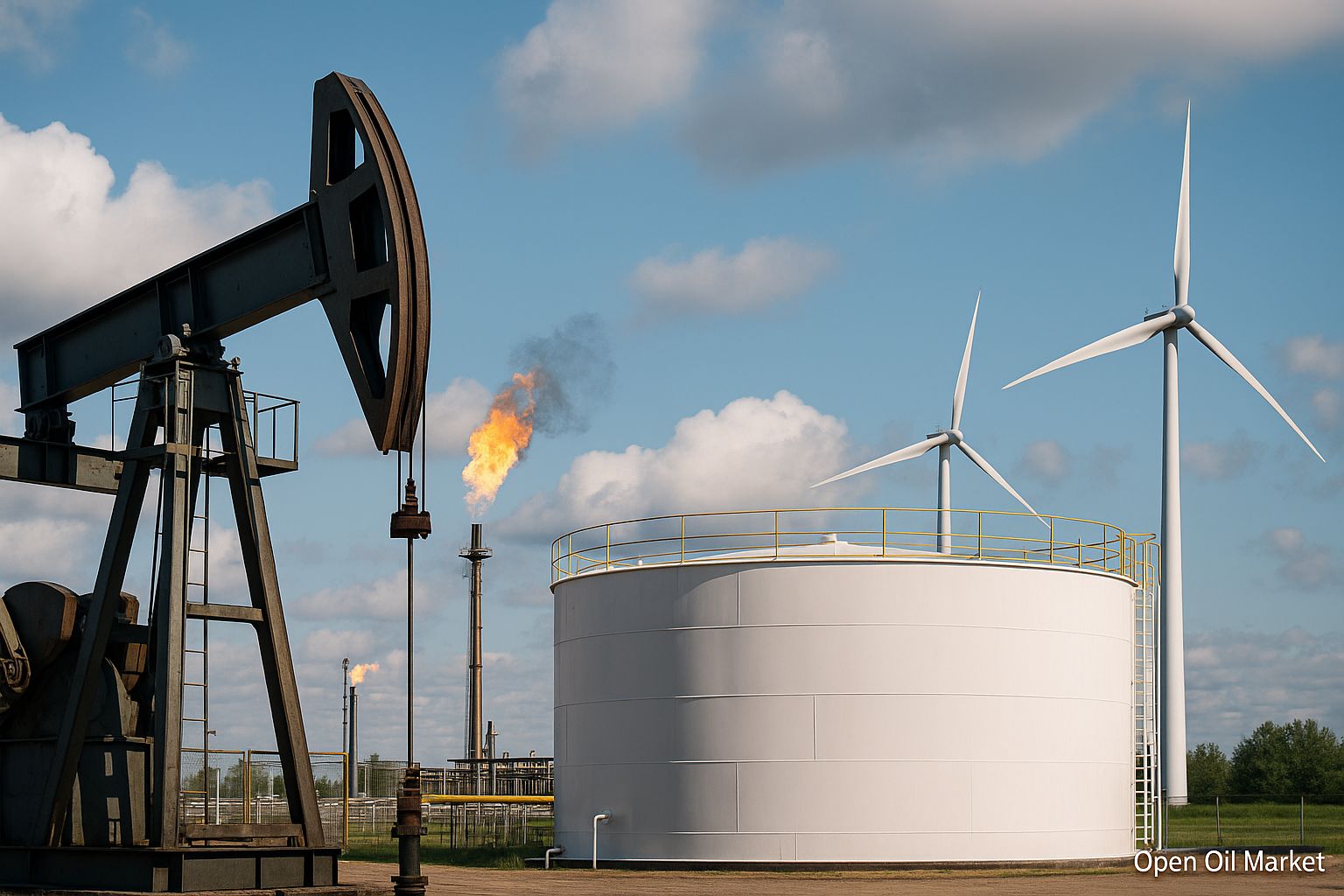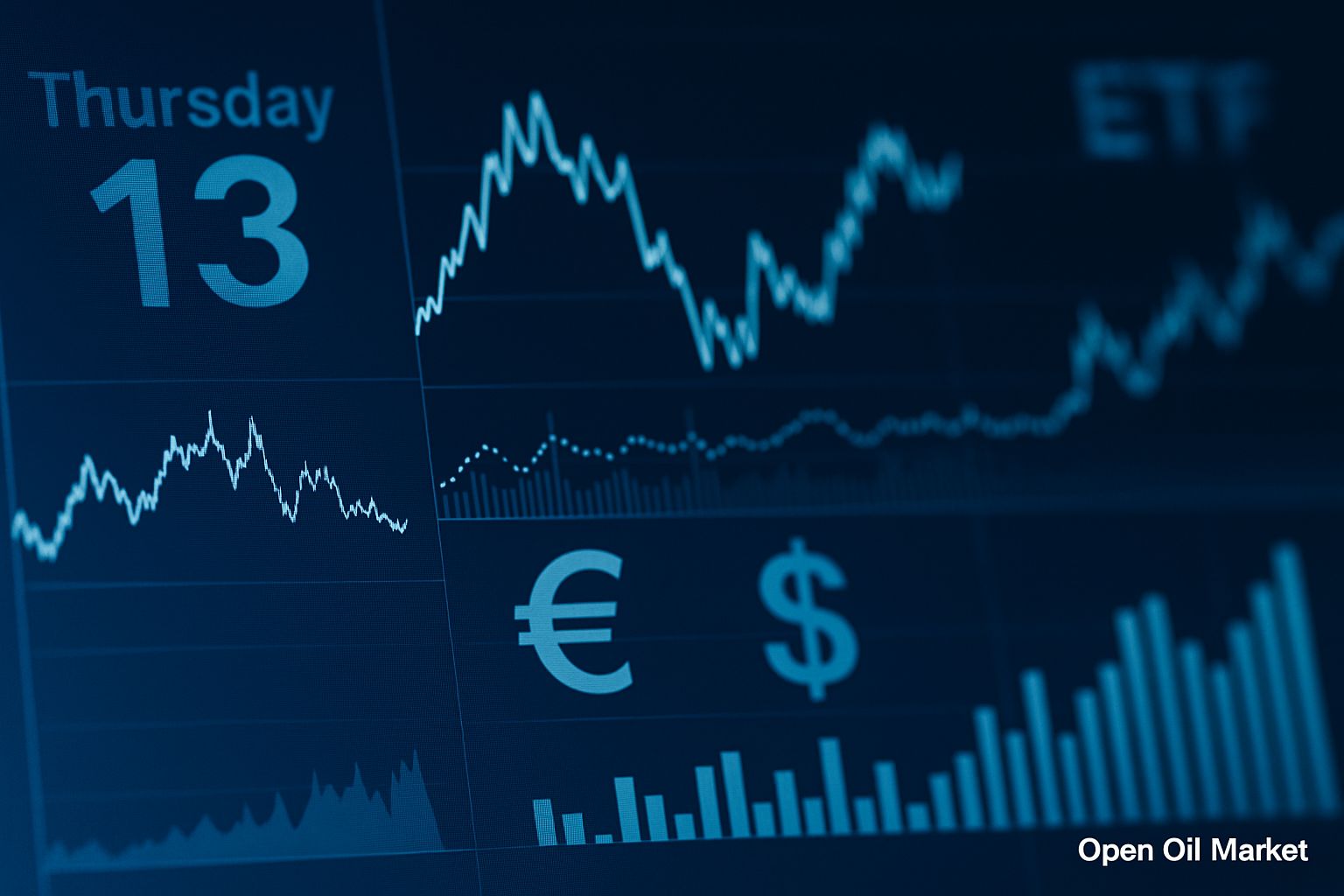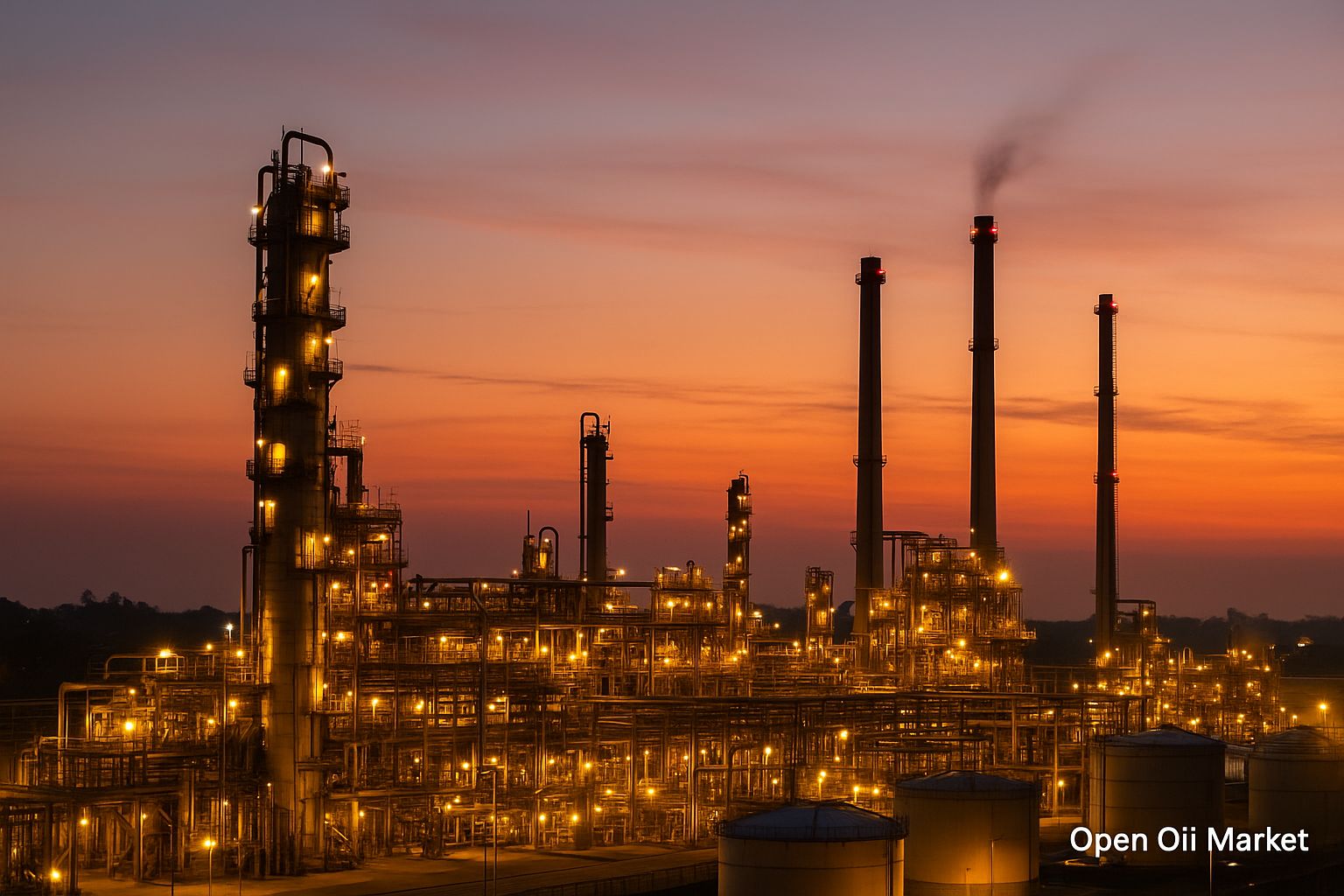
Key News in the Energy Sector as of November 9, 2025: Intensified Sanctions Pressure from the US, Oil Surplus, Moderate Gas Reserves, Renewable Energy Records, and Extension of Fuel Market Stabilization Measures in Russia.
Current events in the fuel and energy complex (FEC) as of November 9, 2025, are characterized by heightened geopolitical tension and significant shifts in raw material markets. The sanctions confrontation between Russia and the West has entered a new phase: the United States has tightened energy sanctions, and the European Union has approved the 19th package of restrictions affecting the fuel sector. At the same time, the global oil market is showing signs of oversupply and weakening demand, driving Brent prices down to approximately $60 per barrel—significantly below summer peaks. The European gas market is entering the winter season with relatively moderate reserves: EU storage facilities are filled to about 85% (compared to nearly 100% a year ago), but diversified supplies—mainly LNG—are currently keeping prices from sharp spikes. Meanwhile, the energy transition is gaining momentum: new records in renewable energy generation are being set, although the variable nature of "green" energy continues to maintain the role of fossil fuels. Below is an overview of key news and trends in oil, gas, energy policy, and the raw materials sector as of the current date.
Oil Market: Oversupply Pressures Prices
By early November, global oil prices remain at relatively low levels following recent declines. The benchmark Brent blend is trading at around $62–64 per barrel, while American WTI hovers near $60, reflecting a shift in the balance towards surplus. Several factors influence price dynamics:
- OPEC+ Production Increase: The oil alliance is gradually increasing supply. At an extraordinary meeting in early November, OPEC+ countries agreed to a production increase of approximately 137,000 barrels per day starting in December, with further quota increases postponed until the first quarter of 2026. These additional barrels heighten market saturation.
- Slower Demand Growth: Global oil consumption is growing much more slowly than in previous years. According to the IEA, demand growth in 2025 is expected to be less than 1 million barrels per day (compared to over 2 million in 2023). Economic slowdowns—especially in China—and the consequences of past price spikes (energy conservation, efficiency improvements) are dampening consumption increases.
- Increasing Non-OPEC Inventories: Commercial oil and petroleum product reserves have noticeably increased in the US and other countries. The Energy Information Administration (EIA) reports a significant rise in oil reserves in the US this fall; weakening environmental regulations in North America are encouraging further production growth. Additionally, supplies from previously stagnant sources—such as the oil region of Kurdistan in Iraq—have resumed after a long hiatus.
The oil market is closing out the year in a state of relative balance with a tendency towards oversupply. On one hand, fears of supply disruptions or tightening sanctions prevent prices from sharply declining; on the other hand, expectations of increased supply (from OPEC+ and independent producers) create moderately bearish sentiment. In the absence of serious emergencies, oil prices are likely to remain moderate until the end of the year. Isolated disruptions (such as recent attacks on infrastructure) have little impact on the market due to the overall surplus.
Gas Market: Winter Approaches with Sufficient Reserves
The natural gas market remains relatively stable, although the approaching winter keeps participants alert. European countries have managed to accumulate substantial volumes of gas in advance of the heating season—though this is less than a year ago. Key factors in the gas market currently include:
- Storage Levels: As of early November, underground gas storage in the EU is approximately 85% full. This is below last year's level but still provides a buffer in case of a cold winter.
- LNG Imports: Europe is compensating for the decline in pipeline supplies from Russia with record LNG imports. Supplies from the US, Qatar, and other countries remain high, and weak LNG demand in Asia in the first half of the year allowed additional volumes to be directed to European terminals.
Overall, Europe enters winter well-prepared: although gas reserves are not at record levels, their combination with diversified imports instills confidence in market stability. Gas prices in the EU are currently significantly lower than the peaks of 2022. If the winter is not harsh and competition for LNG from Asia remains moderate, the European gas market may navigate the season without new price shocks. However, the industry is closely monitoring weather conditions and consumption to respond quickly to potential changes.
International Politics: Sanctions Pressure and Global Risks
The geopolitical situation in energy at the end of 2025 remains tense. Despite summer contacts between Moscow and Washington, no significant easing has occurred—on the contrary, the West intensified restrictions in the fall. In October, the US administration imposed new sanctions on major Russian oil companies, increasing pressure on Moscow in the context of the Ukraine conflict. These measures severely complicated the international operations of Russian oil and gas companies. In late October, the European Union approved its 19th sanctions package, further tightening energy restrictions.
Dialogue has not been completely severed: individual transit or humanitarian deals are being discussed, but it is still too early to talk about lifting sanctions. Companies and investors are adapting to a prolonged period of restrictions by diversifying markets and logistics. Any signals about negotiations between major players temporarily shake the market, but caution and adaptation to the new reality prevail.
USA: Record Production and Intensifying Exports
The United States is maintaining record oil production levels (~13 million barrels per day) in 2025 amid consistently high domestic demand. Thanks to the shale boom, the country has become a net exporter of hydrocarbons; American LNG is actively supplied to Europe, partially replacing Russian gas. Washington's energy policy is focused on "dominance": the removal of certain environmental restrictions encourages further production growth. Overall, record production and US exports serve as an important stabilizing factor in the global market, quickly compensating for disruptions in other regions.
Asia: The Leading Role of China and India in Demand
In Asia, China and India remain the key drivers of energy consumption. India is rapidly increasing oil imports (including cheap Russian oil) and LNG while developing processing and infrastructure to meet growing domestic demand. China, although it has slowed down its consumption growth, continues to purchase record volumes of oil from external markets and is increasing gas imports; however, both countries still significantly depend on fossil fuels (primarily coal). The scale of demand from China and India makes their economic trends and policies critically important for global energy prices.
Energy Transition: Renewable Energy Records and Variability Issues
The year 2025 is marked by new records in clean energy. In the first half of the year, global generation from renewable sources (wind and solar) has for the first time surpassed production from coal-fired power plants. Rapid growth in renewable energy capacity—especially in leading economies—has increased the share of "green" energy in the global balance. Investments in renewable energy and storage systems have reached record levels: governments and major companies are investing in solar and wind farms, batteries, and grid modernization.
However, this year has also highlighted the challenges posed by the variable nature of renewable energy. Prolonged periods of weak wind and drought in some regions have reduced output from wind and hydroelectric plants, necessitating compensation for the shortfall in "green" energy through traditional sources. In Europe, the autumn deficit in wind generation was partially offset by increased burning of gas and coal, which temporarily raised emissions. To enhance the reliability of energy systems as the share of renewables grows worldwide, the adoption of energy storage systems and smart grids is accelerating. Oil and gas corporations are also increasing investments in low-carbon projects to align with long-term climate trends and shifts in demand.
Russian Fuel Market: Extension of Restrictions and Stabilization
In Russia, the policy of strict control over the fuel market, initiated in the summer to prevent shortages and price spikes, continues into the autumn of 2025. The temporary ban on gasoline exports has been extended at least until the end of the year (with possible extension into 2026); export restrictions on diesel fuel also remain in place—exports are only allowed when the domestic market is fully supplied. At the same time, the government is adjusting the "damping" mechanism—a compensation system for refiners: the price threshold at which subsidies are paid to refineries is being raised to reduce the benefits of exports amid high global prices. Authorities are also directing additional fuel volumes to regions affected by previous disruptions to prevent new crises.
These measures are already yielding results. Wholesale gasoline and diesel prices, which peaked in August, have fallen and stabilized in the autumn. Retail price increases have also slowed, although fuel is still noticeably more expensive than a year ago. The government is confident that the situation is under control: gas stations are supplied, and prices are expected to decline after the conclusion of seasonal work and repairs at refineries. The lifting of export restrictions will only be considered after the domestic market is fully saturated.
Telegram Channel OPEN OIL MARKET – Daily Analytics on the FEC Market
To stay updated on the latest events and trends in the fuel and energy complex, subscribe to our Telegram channel @open_oil_market. Fresh news and expert reviews of the oil and gas sector, insider industry information, and verified facts are published daily there. Be among the first to learn about important changes in the oil, gas, electricity, and other raw material markets.




